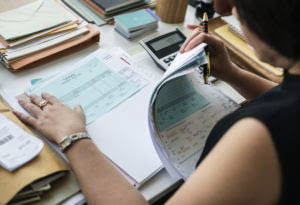Bookkeeping
Cash Flow in Real Estate: What Is It + How to Calculate

At its core, cash flow refers to the net income generated from rental properties after deducting all expenses and debt service. It gives investors a clear picture of how much money flows in and out of their investments regularly. Tax implications are a significant factor in real estate cash flow analysis, influencing the immediate financial performance and the long-term profitability of property investments.
Freed Income To Invest in Asset
When investors can accurately measure an asset’s performance using critical financial tools, they gain a deeper insight into that asset’s potential to earn them a return. While most owners invest for positive cash flow, there are some situations in which a property is generating negative cash flow. This can be a one-time occurrence, or something that happens on a regular basis. One way to think about cash flow investing is to compare it to investing in dividend-paying stocks. At regular intervals you receive cash distributions from the investment while doing very little – if anything – with the asset you’ve purchased. Understanding why cash flow is important in real estate extends to more than just profitability.
- Additionally, maintaining a healthy cash reserve can improve the investor’s purchasing power and create more significant opportunities for acquiring new properties in the future.
- Property management includes a variety of tasks ranging from tenant screening to handling lease agreements, maintenance, and adhering to legal standards.
- If they increase faster than you’re able to raise the rent, you may run into a diminishing cash flow problem.
- So, in a down market, investors can save money by appealing their property tax bill and asking for a reduction.
- Use equity as leverage to buy multiple investment properties to grow your wealth and rental income.
Repairs and maintenance

Cash flow in real estate refers to the profit generated by a property after accounting for operational expenses, income, and reserves for future repairs. Before you seriously consider buying a rental property, you need to determine the rental’s projected monthly cashflow, and make sure it’s going to be a worthwhile longterm investment. After all, a big reason you’re probably in this business is to get a return on investment, and cash flow is a major factor in the buy-and-hold investment strategy. For example, we have our own in house property management team so we typically insource this responsibility, driving cost savings and improved cash flow for our investors. Or, it may be wise to renegotiate service contracts for things like landscaping and maintenance or to invest in technology that will allow what is cash flow in real estate for a smaller onsite team.

What is a Positive Cash flow Property?
As previously mentioned, a rental property in a good condition and situated in a prime location increases the overall value of the property overtime. This is Airbnb Accounting and Bookkeeping a major win for real estate investors because they are able to sell the property for a lot more than the original purchase price and earn a big fat profit margin from the sale. As mentioned, real estate investors use the 1% rule when considering whether to invest in a property. Simply multiply the purchase price of a property by 1% (or move the decimal point two places to the left) — the result is the minimum income you need for a positive cash flow. Vacancies, tenant churn, taxes, maintenance and repairs can all eat into your rental income, giving you negative cash flow in real estate.
How to Calculate Real Estate Cash Flow

Real estate investments present investors with a compelling opportunity to include strong cash flow assets in their portfolios. For example, if a property generates $300,000 in gross income, has $150,000 in operating expenses, and $175,000 in debt service, then the property would be generating $25,000 in negative cash flow. The cash flow statement guides investors through the complexities of real estate finances. It helps you to understand the current state of your investments and sparks strategies for future enhancement.
How can I find positive cash flow properties for sale?
- To do this, you’ll need to understand the different sources of income – like rent and deposits – as well as expenses such as taxes, insurance, and repairs.
- Stessa helps both novice and sophisticated investors make informed decisions about their property portfolio.
- So, when a tenant’s lease comes up for renewal and the market is strong, it may be possible to raise the rent which can lead to more cash flow.
- You might have a cash flow goal, such as $150 per unit per month, but “good” cash flow varies from investor to investor and market to market.
- Total cash flow is the profit after all expenses are paid – including debt service.
- Vice-versa, it’s easier to find a cash flowing property in a cooler market, but rents aren’t high enough to really move the needle financially.
Analyze the local rental market to get a feel for demand and competitive rental rates. Calculate with precision all possible expenses when investing, including mortgage payments, property taxes, insurance, maintenance, and management fees. Offering property upgrades or adding amenities will justify higher rents for better and more reliable tenants. Additionally, maintenance and capital expenditures play a significant role; regular upkeep prevents costly repairs, while strategic investments can potentially increase long-term income.

How Can Investors Increase Cash Flow?
Conversely, a shorter holding period may yield quicker returns but might not fully capitalize on the property’s value growth. Your operating expenses will likely include property taxes, insurance, maintenance and repairs, property management fees, homeowners association fees, utilities, and vacancy costs. You might also set aside some amount for capital expenditures (e.g., a new roof, new air conditioning systems, etc.) in your gross expenses. Positive cash flow in real estate is considered the central factor in any successful property investment.
When selecting the kind of real estate to invest in, investors should carefully consider local regulations and market conditions to achieve maximum cash flow. For real estate investors, positive cash flow is a measure of profitability and directly linked to return on investment. Market rents and debt service have the most impact on real estate cash flow. In preparing a cash flow statement, real estate investors itemize all sources of income and expenses to accurately determine their cash flow status. This financial document is pivotal for tracking performance over time and making informed decisions about managing, improving, or divesting property investments.
Bring all leases up to market rent.
When tenants move out, owners might face periods of retained earnings balance sheet vacancy, which result in lost rental income. Additionally, rental property owners may incur costs to advertise, screen new tenants, and make necessary repairs or improvements before renting the property again. Gross rental income is the total amount of money collected from tenants in the form of rent payments.


